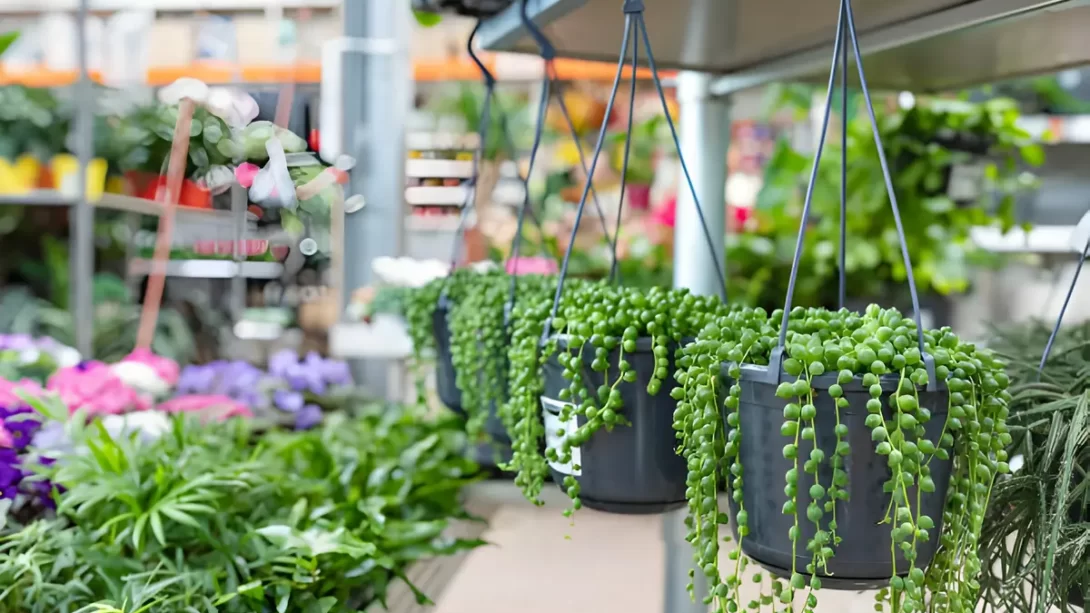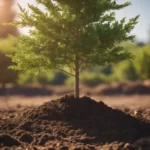The String of Pearls plant, scientifically known as Senecio rowleyanus, is a captivating succulent famed for its unique, bead-like leaves that cascade beautifully in hanging baskets. This charming plant has gained immense popularity among houseplant enthusiasts for its distinctive appearance and ease of care. Propagation, the process of creating new plants from an existing one, is not only vital for maintaining the health and vigor of your String of Pearls but also allows you to expand your collection or share with fellow plant lovers.
Propagation Basics
Propagation is the process of growing new plants from a variety of sources – seeds, cuttings, or other plant parts. For String of Pearls, stem cuttings are the most effective method. This can be done at any time of the year, but the best results are typically seen in spring or early summer when the plant is in its active growing phase. Understanding when and how to propagate ensures the successful growth of new, healthy plants.
Preparing for Propagation
Begin by choosing a healthy String of Pearls plant to act as the ‘mother plant’. Look for stems that are robust, free from pests, and have well-formed pearls. You will need sharp scissors or pruning shears, a clean pot, fresh potting mix suitable for succulents, and water. For those opting for water propagation, a small jar or glass will be required. Ensure all tools are clean and sterilized to prevent the spread of disease. Preparing the right environment is crucial; a warm spot with bright, indirect light is ideal for encouraging growth.
Method 1: Soil Propagation
Soil propagation is a straightforward and popular method for growing new String of Pearls plants. Start by taking cuttings from the mother plant using clean scissors or shears. Cut a healthy stem, ensuring it’s about 3-6 inches long and has several pearls on it. Remove a few pearls from the end of the cutting to expose the bare stem; this is where roots will form. Allow the cutting to callous over for a day or two to prevent rotting. Next, fill a pot with well-draining succulent or cactus soil and plant the bare stem part of the cutting into the soil. Water lightly and place the pot in a location with bright, indirect light. Keep the soil slightly moist but not waterlogged, and in a few weeks, roots should begin to form.
Method 2: Water Propagation
Water propagation can be a visually appealing way to propagate String of Pearls. Similar to soil propagation, start by cutting a healthy stem of about 3-6 inches in length. After removing a few pearls from the end, place the cutting in a jar or glass of water, ensuring only the bare stem is submerged. Change the water every few days to keep it fresh and prevent bacterial growth. Place the jar in a spot with bright, indirect light. Roots typically begin to appear within a few weeks. Once the roots are a few inches long, the cutting can be transferred to soil, following similar planting steps as in soil propagation.
Aftercare and Troubleshooting
After planting your String of Pearls cuttings, whether in soil or transitioning from water, it’s important to provide proper care for successful growth. Water sparingly, allowing the soil to dry out slightly between waterings. Be on the lookout for signs of overwatering, such as mushy stems or pearls, and adjust your watering schedule accordingly. If the pearls start to shrivel, it might indicate underwatering or a need for more humidity. Patience is key during this stage; it can take several weeks to a few months for the plant to establish and begin new growth.
Conclusion
Propagating String of Pearls, Senecio rowleyanus, is a rewarding and engaging aspect of gardening, allowing you to expand your collection and share these unique plants with friends and family. Whether you choose soil or water propagation, the key is patience and attentive care. Over time, your cuttings will develop into healthy, independent plants, each with its own cascading trails of pearl-like leaves.
Remember, propagation is not just about growing new plants; it’s a journey of learning and discovery. Each cutting can behave differently, so observe and adapt to their needs. As your propagated String of Pearls thrive, you’ll gain not only new plants but also invaluable gardening experience and confidence.
Embrace the joy and satisfaction that comes with successfully propagating your own String of Pearls. This process, filled with its trials and triumphs, encapsulates the essence of gardening: nurturing growth, celebrating nature’s beauty, and enjoying the simple pleasures of plant care.



